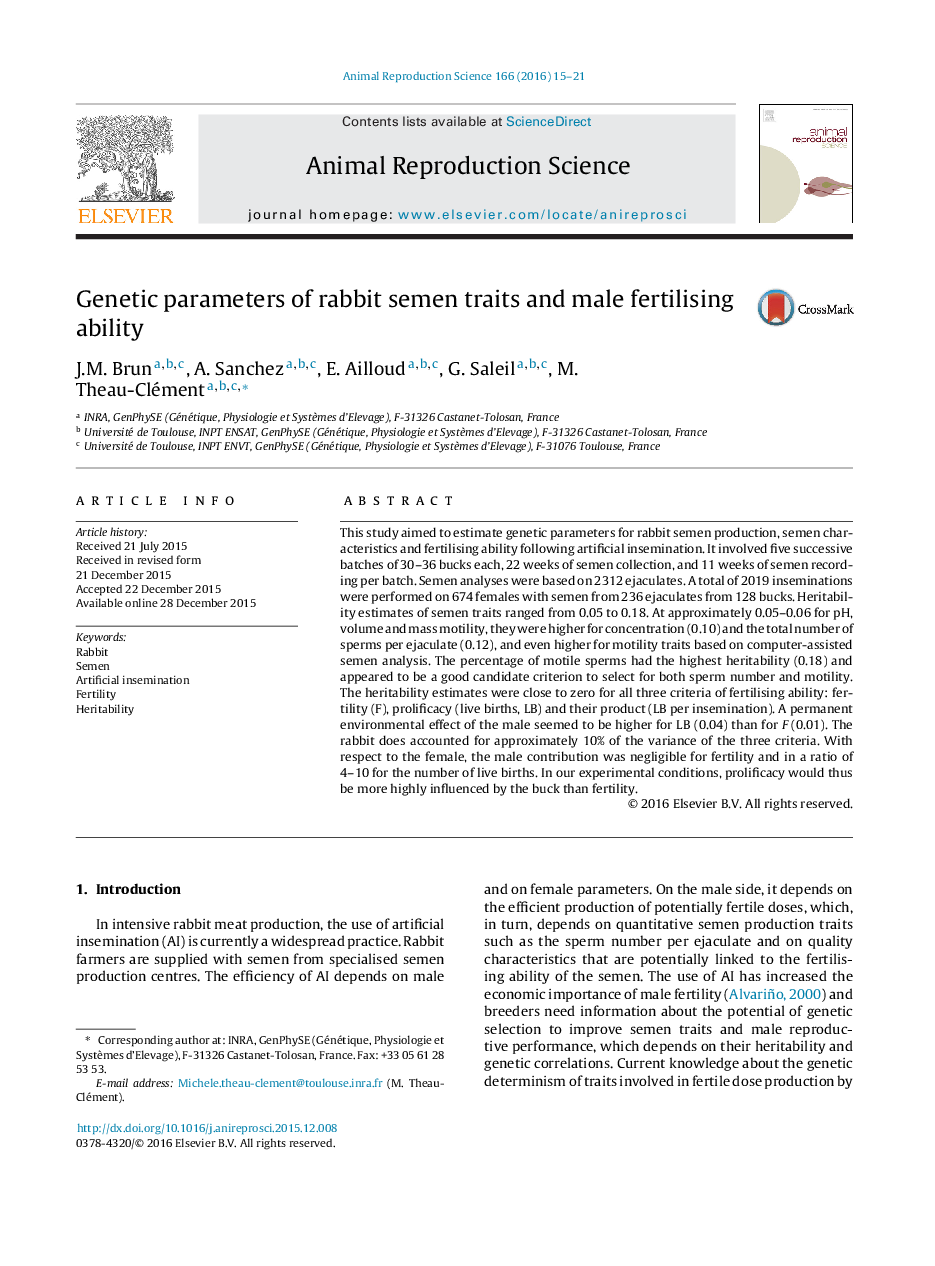| کد مقاله | کد نشریه | سال انتشار | مقاله انگلیسی | نسخه تمام متن |
|---|---|---|---|---|
| 2072538 | 1544711 | 2016 | 7 صفحه PDF | دانلود رایگان |
• Efficiency of rabbit insemination centres depends on the production of fertile doses.
• Heritability estimates of semen traits ranged from 0.05 to 0.18.
• Permanent environmental effects were generally higher than additive genetic ones.
• Motile sperms percentage appeared as a good selection criterion.
• Fertilising ability heritability estimates were close to zero.
This study aimed to estimate genetic parameters for rabbit semen production, semen characteristics and fertilising ability following artificial insemination. It involved five successive batches of 30–36 bucks each, 22 weeks of semen collection, and 11 weeks of semen recording per batch. Semen analyses were based on 2312 ejaculates. A total of 2019 inseminations were performed on 674 females with semen from 236 ejaculates from 128 bucks. Heritability estimates of semen traits ranged from 0.05 to 0.18. At approximately 0.05–0.06 for pH, volume and mass motility, they were higher for concentration (0.10) and the total number of sperms per ejaculate (0.12), and even higher for motility traits based on computer-assisted semen analysis. The percentage of motile sperms had the highest heritability (0.18) and appeared to be a good candidate criterion to select for both sperm number and motility. The heritability estimates were close to zero for all three criteria of fertilising ability: fertility (F), prolificacy (live births, LB) and their product (LB per insemination). A permanent environmental effect of the male seemed to be higher for LB (0.04) than for F (0.01). The rabbit does accounted for approximately 10% of the variance of the three criteria. With respect to the female, the male contribution was negligible for fertility and in a ratio of 4–10 for the number of live births. In our experimental conditions, prolificacy would thus be more highly influenced by the buck than fertility.
Journal: Animal Reproduction Science - Volume 166, March 2016, Pages 15–21
